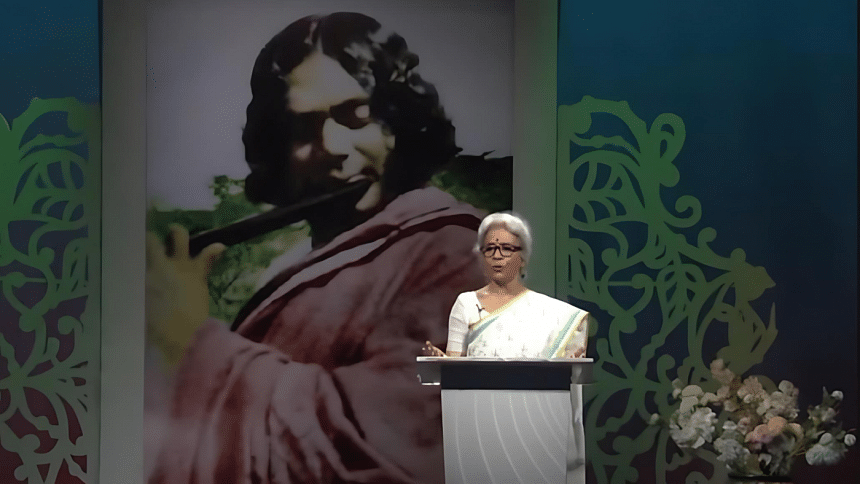E ki rono-baja baje ghono ghono: The Nazrul poem that the internet loves to laugh about

The last month has been possibly the most chaotic time to be on the internet as a Bangladeshi. As the country recovers from a bloody revolution -- the first of its kind in the internet age for Bangladesh -- we are left with the remnants of endless memes and trends that people used to express their anger, frustration, and passion throughout this time.
In the top rank of the most popular memes during this July Revolution would be the video of reciter Dalia Ahmed, performing Kazi Nazrul Islam's "Agomoni" on BTV. The reason this poem -- which starts off with the verses "E ki rono-baja baje ghono ghono/Jhono ronorono rono jhonojhono" -- became a point of ridicule for netizens was the fact that on July 16, as the country was descending into chaos and every media outlet had its full attention trained on the student protests to reform the quota system, BTV's choice to broadcast this recitation performance was deemed out of place.
Once this was pointed out, the internet did the rest. Content creators made people laugh by sneaking in references to the poem in unexpected places, as did musicians by making remixes of the recitation with modern beats in the background. A "trance mix" of the poem on YouTube has almost 60 thousand views, and another remix has racked up 75 thousand views, while a reel produced by popular creator Mashfiq Anam Turjo reciting the poem's first two lines in his signature confused manner racked up over one million views on Facebook.
As the new generation gets introduced to the work of Kazi Nazrul Islam in an unexpected scenario, it presents a great opportunity for them to explore this beautiful poem by Bangladesh's national poet.
Agomoni is a genre of Bangla folk music that celebrates the coming of the goddess Parvati to her parent's home on the eve of the Durga Puja. The poem "Agomoni", which was published as a part of the celebrated book of poems, Agnibeena, invokes the story of the coming of the goddess Durga and how that led to the destruction of Mahishasura, a demon-like figure in Hindu mythology.
The poet, with his choice words and rhythm, creates an environment in this poem where a preparation for war is ongoing. The sound of drums that one may be reminded of when reading Agomoni can be attributed to the tradition of playing drums during the celebration of Durga Puja, as well as the convention of using war drums to boost soldiers' morale in the olden days. And while Agomoni is heavily influenced by ancient Hindu mythology, the context in which the poem was written is important to consider as well.
Kazi Nazrul Islam's first book of poems, Agnibeena, was published in 1922, in the aftermath of the First World War where the revolutionary poet had served and the experience of which contributed to his revolutionary spirit. The poet, in his seminal work, is expressing hope that the way in which Durga's arrival was a precursor to the destruction of evil in the world can be emulated by the people of undivided India to drive away the injustice and misrule of the British colonial powers.
While Agomoni came to the forefront of the youth's thoughts during this time as an example of the state television network being out of touch, it's ironic that it did so because the poem's message does resonate with the youthful spirit that drove this protest. It also goes to show the timeless nature of Kazi Nazrul Islam's work, whose revolutionary spirit has inspired us in the past, and will continue to do so in the future.

 For all latest news, follow The Daily Star's Google News channel.
For all latest news, follow The Daily Star's Google News channel. 



Comments